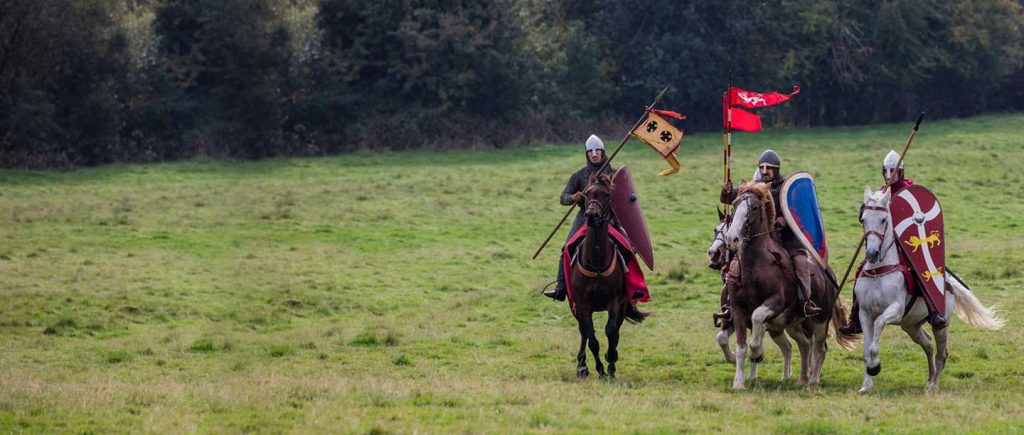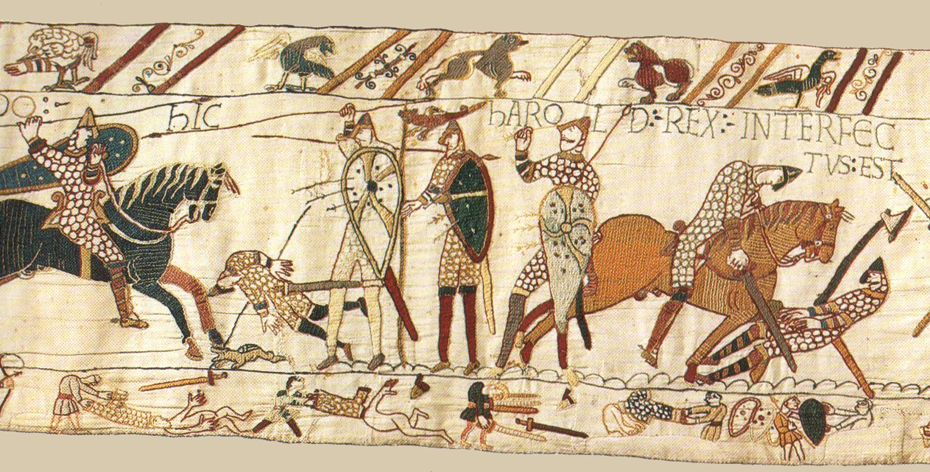
PHOTO: english-heritage.co.uk
In AD 1066, a date widely regarded as one of the most important dates in all of world history, William the Conqueror invaded Saxon England and claimed the country for the Normans in the Battle of Hastings. The Normans originally came from, you guessed it: Normandy – a feudal country in what is now modern-day France.
Normandy was first settled by pirates from Denmark, Norway, and Iceland in the 8th century. These pirates quickly adapted Frankish culture, and conquered the western French coastlands as well as the valley of the lower Seine River.
Over the years, they built castles, established themselves as dukes and counts over the native Frankish population, and kept their fierce love of fighting and war. Eventually, their leader, William duke of Normandy, sailed across the sea and took England for the Normans.
On the battlefield, the Normans had the upper hand over the native Saxons. The Saxons fought on foot, using axes and spears, while the Normans fought from horseback using similar weapons and had at least 1000 archers and crossbowmen to help break the Saxons’ shield walls. Both sides’ arsenals originated from the same place: the Vikings.

PHOTO: Durham World Heritage Site
The most common weapon seen in both Norman and Saxon armies was the humble spear. A spear was a poor man’s weapon. It was used for thrusting, or sometimes thrown like a javelin. In the famous Bayeaux tapestry – the tapestry depicting the Battle of Hastings – the spear takes center stage.
Smithing in the 11th Century

PHOTO: medievalists.net
Blacksmithing in the Medieval era was considered to be one the seven mechanical arts. That sounds pretty fancy, but it was basically a nice way of saying “menial labor”. Despite this, though, every town needed a blacksmith. Smithies were a staple everywhere.
European blacksmiths used three basic tools: a hammer, an anvil, and a charcoal heated forge. While medieval blacksmiths didn’t understand the chemical processes of blacksmithing, they still understood their art enough to make strong weapons, as well as useful tools and small items like nails and jewelry. They knew to avoid coal contaminated with sulfur – because sulfur made steel weak and crumbly. They also knew that spending a lot of time heating and working iron before shaping it into anything improved the quality of the metal.
Scientifically, heating, beating, and cooling metal decreases oxygen and raises carbon levels in steel, creating higher and higher grades of steel the more the process is repeated. That’s the short version.
In the video below, you can watch as Archaeological Ironworker and Medieval weapons expert Hector Cole MBE forges a spearhead just like it would have been done by a Norman blacksmith in AD 1066. He uses traditional tools, bellows, and charcoal to heat the iron, resurrecting historical smithing techniques to give us a firsthand look at the craft in Norman Europe.

